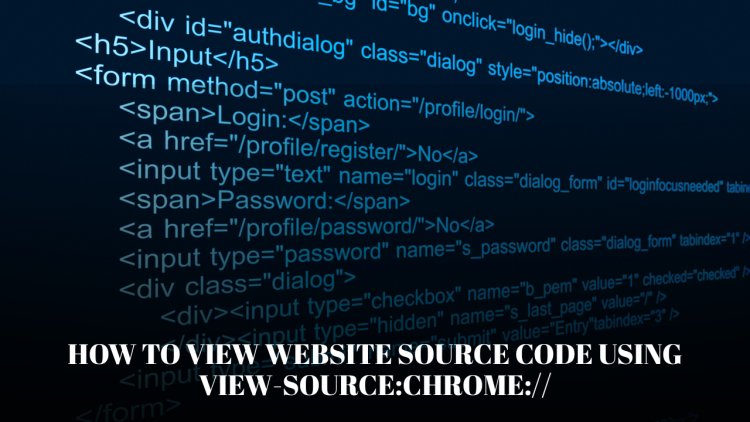How to View Website Source Code Using view-source:chrome:// on Any Browser
The simplest method to gain website source code access works through browser commands that start with `view-source:chrome://` or similar.

Have you ever pondered about the construction process behind websites? The source code display helps users understand website designs and the way they operate and their basic structural components. The process to access web development source code of HTML and CSS and JavaScript is easy to perform whether you are starting as a new developer or simply want to know more about websites. The simplest method to gain website source code access works through browser commands that start with `view-source:chrome://` or similar.
This guide demonstrates how to view page source functionality in Chrome along with Firefox and Edge and their versions all while including additional methods to analyze website code.
Method 1: Using view-source:chrome:// (Chrome & Edge)
Google Chrome along with Microsoft Edge allows users to view website source code through the **`view-source:`** directive. Here’s how:
-
Users can open a new tab from Chrome or Edge to proceed.
-
To view the webpage source, provide the URL after the prefix "view-source:" (enter "view-source:https://www.example.com").
-
After entering the command and pressing Enter you can view the untainted HTML code of the page.
To see website code instantly you do not need developer tools through this method. Any viewing attempt of view-source:chrome:// in place of a valid website URL results in an unhelpful display of Chrome internal protocols.
Method 2: Right-Click to View Page Source
The popular approach to view web page code through right-clicking works as follows:
1.Go to any webpage (e.g., `learningtoday.net`).
2. Right-click anywhere on the page.
3. You can find web page source code using two methods: "View Page Source" for Chrome and Firefox users or "Inspect" for Edge and Safari browsers.
The action shows the HTML source code in another tab or it gets opened in developer tools.
Method 3: Using Browser Shortcuts
The view page source function becomes even faster through the use of keyboard shortcuts.
-
Chrome/Edge/Firefox browsers but Windows users can use `Ctrl + U` while Mac users need to hit `Cmd + Option + U`.
-
The Safari browser enables access to "Develop Menu" through the settings interface and allows users to activate the `Cmd + Option + U` command.
From any point on the page users can access immediate visual representation of its HTML structure through these shortcuts.
Method 4: Inspect Element (For Specific Code)
You can check individual sections of the page (such as buttons and images) through Inspect Element.
1. Right-click on the element.
2. Press the "Inspect" command option or the equivalent "Inspect Element" function from Firefox.
3. The Developer Tools** panel displays both the exact HTML and CSS after its opening.
This tool enables users to examine web page internals when caring about debugging or gaining insight regarding specific parts.
Why Viewing Source Code is Useful?
-
The process of web development can be observed through examination of coded professional sites.
-
Users should examine HTML and CSS code to detect possible errors.
-
You need to study how competitors implement their design components.
-
SEO Insights shows users how to examine meta tags and structured data.
Final Thoughts
You can view page source in three different ways through using the chrome:// URL or shortcut commands and launching developer tools. The ability to view page source serves as a fundamental skill for web developers and designers together with digital marketers.
What's Your Reaction?
















.jpg)
.jpg)


